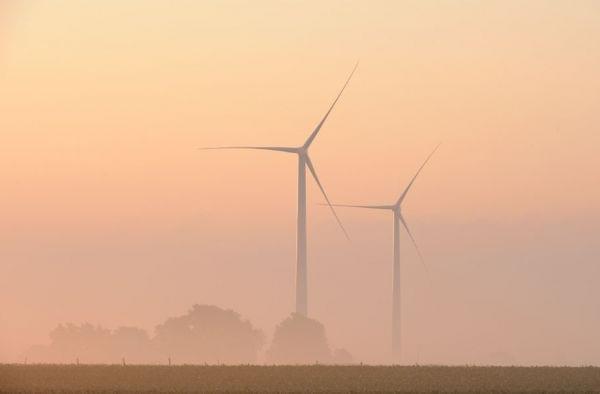U of I Contracts With Wind Farm To Help Power Urbana Campus

Rail Splitter Wind Farm near Lincoln, Illinois. Rail Splitter Wind Farm
Some of the electricity used on the University of Illinois Urbana campus now comes from a central Illinois wind farm.
The university says it’s signed a ten-year power purchase agreement with the Rail Splitter Wind Farm near Lincoln, and began using its electricity in November.
The Rail Splitter Wind Farm is one of several wind farms operated by the North American branch of the Spanish company EDP Renewables.
Morgan Johnston with U of I Facilities and Services says the university has brought wind-generated electricity before. But this is the first time they’ve signed a long-term agreement with a specific wind farm. Johnston says the agreement assures them a price of less than four cents per kilowatt hour.
“They’re very consistent with other clean energy purchases that I’m aware of in Illinois”, said Johnston. “And it is something that’s locked in for ten years, which is really why a lot of people are moving towards renewable energy power purchase agreements, as you can get this ten-year price right now.”
Combined with electricity from its solar farm, the U of I Urbana campus is expected to get more than 33-thousand mega-watt hours of electricity per year from low-carbon energy sources. That’s nearly nine percent of the total electricity used on campus. The goal is to obtain at least 120-thousand mega-watt hours of electricity from low-carbon sources by fiscal year 2020.
The University of Illinois Urbana campus generates about half of its electricity at its Abbott power plant. It buys the rest from mostly conventional sources, in addition to what it now obtains from low-carbon sources, which include a privately operated solar farm on campus, and other solar installations on campus buildings.
Johnston says the university hopes to find more sources for low-carbon electricity by retrofitting some campus buildings for solar power, and exploring biomass and bio-gas energy technology.
